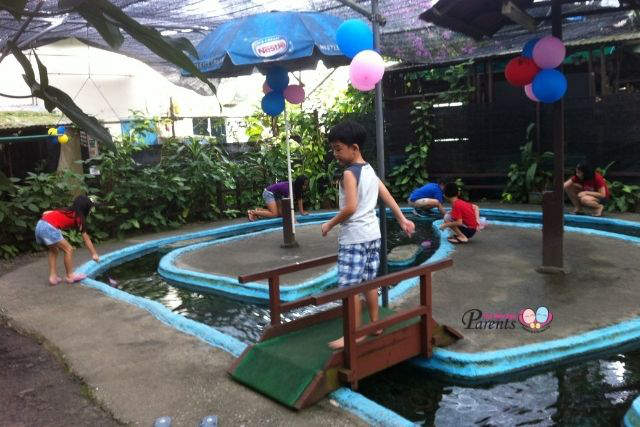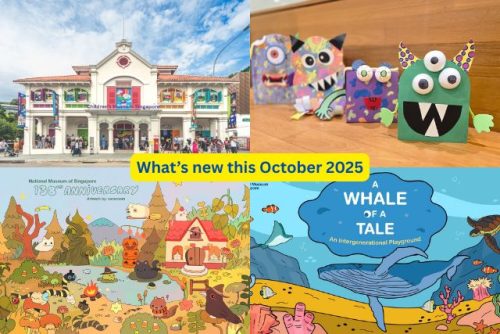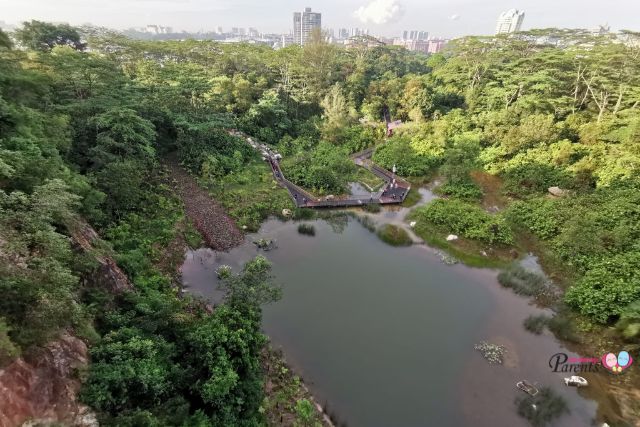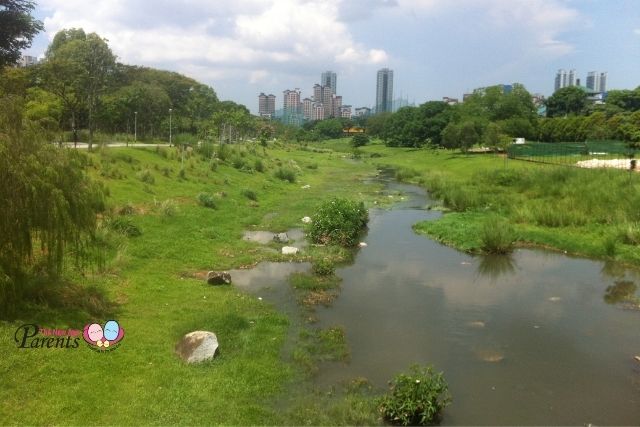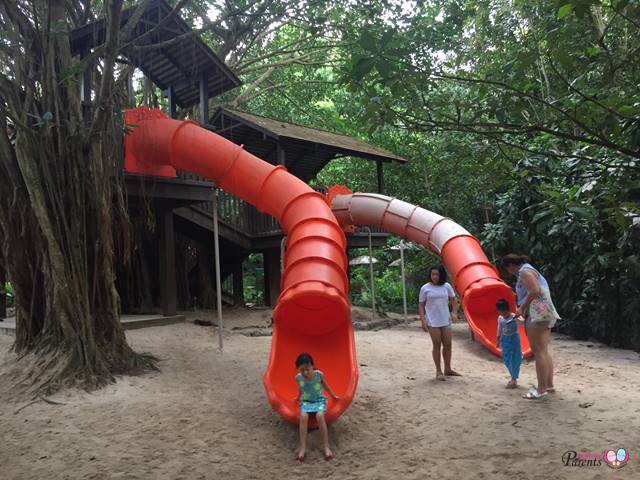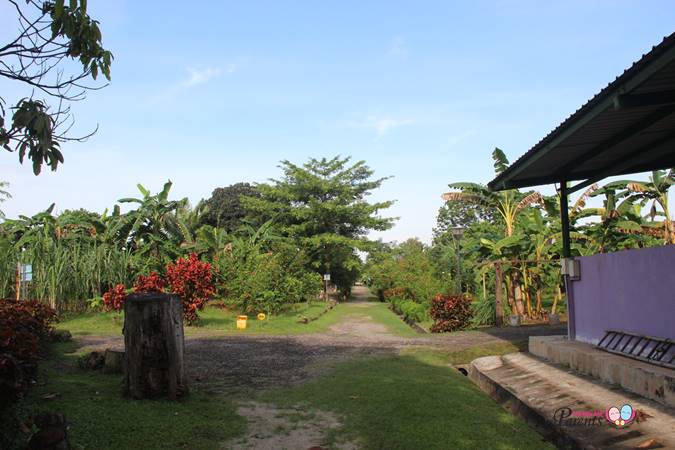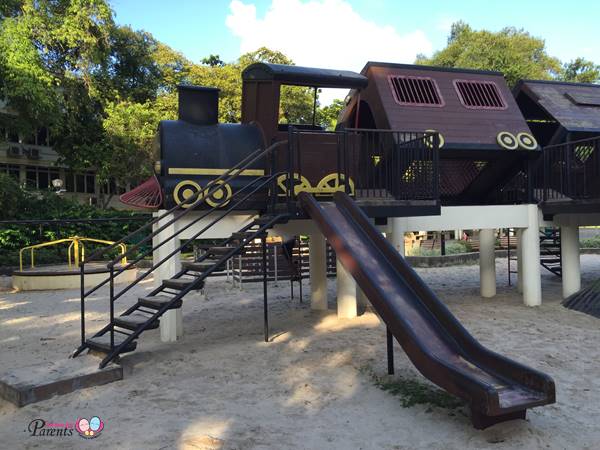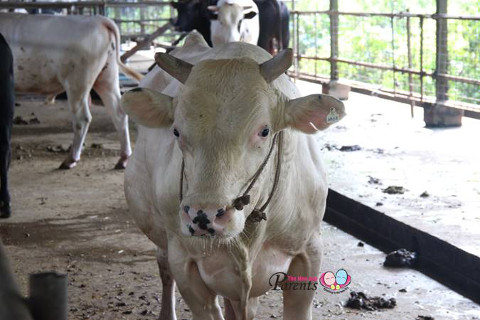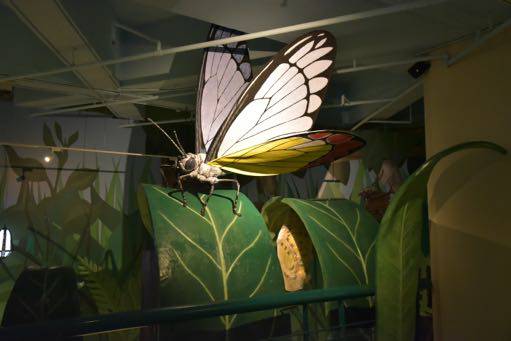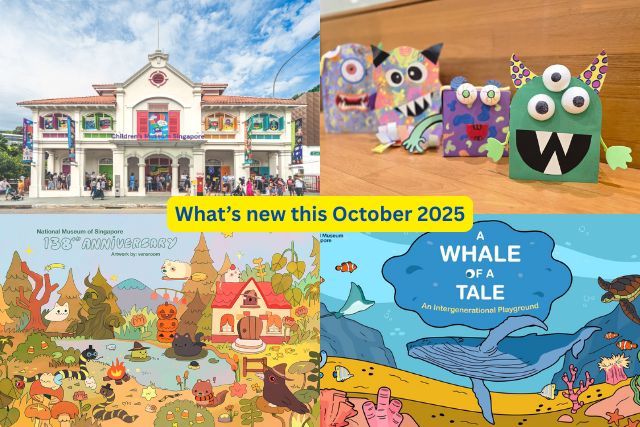I am always very fascinated by friends who post photos (on Facebook or Instagram) of their children having lessons outdoors. A couple I know who lives overseas and homeschooled their two children do an amazing job in educating their children. Their children have a natural love for the environment and they are never too worried about being dirty or sticky while learning.
⇒ Related Read: Why I Want My Kids To Get Dirty
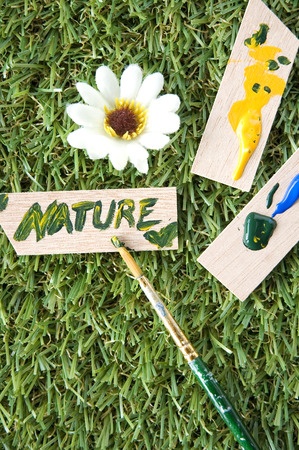
I saw photos of their children running around in big fields, chasing after rabbits and ducks as they learn to observe nature and walking through the forest learning about wilderness survival. The children looked so comfortable spending hours digging mud and looking for worms, laughing and hopping around with their friends during a 3 hr forest walk class, spending time to do outdoor nature drawing and blowing lots of balloons to learn about air.
Growing up in a country where space is limited and where lessons are mainly conducted in a classroom setting may deprive our children of the opportunity to explore and learn by themselves. I enjoy bringing Samuel outdoors. Seeing how his face lit up the moment the lift door opens to a ground-level brings me a lot of joy. I love how the environment and nature create a sense of wonder in Samuel each time we bring him out to the park to chase after birds, to feed the ducks or fishes or to just explore the ants on the ground.
He will always be shouting with joy or go “WOW” when he sees a small monitor lizard running up a tree or a slow crawling tortoise making its way across a pavement. On top of the learning opportunities one can get when we expose our children to nature, it also helps them to improve their attention span and learning capacity.
Here are 5 ideas on how you can teach your child to love the environment.
1. Start with your neighborhood
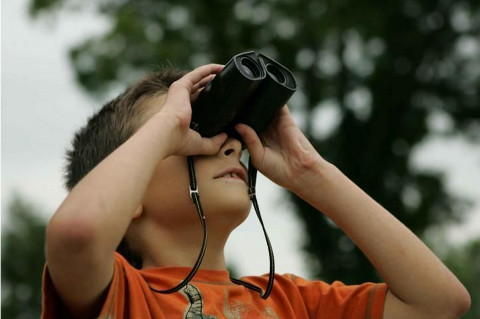
Begin with simple and familiar experiences. Young children learn best through experiences that can relate to when they are most comfortable and secure. Therefore, the best place to start is at the playground or park that is near your home. Or it can also be just an adventure to explore the environment on their way to school or to the market. Give them ample time to stroll – let them pick up and observe leaves, flowers, branches, rocks etc. Point out and name trees, insects, birds and animals. Let them go wild running after the birds or just squatting down to watch the ants crawl by.
My husband and I agreed that it would be a daily affair to bring Samuel to the park that is downstairs our home every evening after he returns home from work. As my husband is a lot more adventurous, he would bring Samuel to run on the grass, pick up the leaves and sticks on the ground, or touch the soil and find different kinds of insects and worms to observe. After exposing him to the environment, I noticed that Samuel is a lot more confident playing in the park than worrying about being dirty and sweaty.
2. Trips to the wild

Plan regular outings to the Singapore Zoo, Bird Park or anywhere that they can be exposed to the live animals in their natural environment. Make such outings a regular part of their growing years! You can also plan regular picnics and outings to nature spots such as the Singapore Botanic Gardens. Introduce them to the joys of hiking.
3. Gift them with books about nature and wildlife
I find that introducing Samuel to books about the nature and wildlife, or animal figurines and toys help arouse his curiosity about them. He gets even more excited about them when he sees them real life before him when we bring him to the zoo. You can also bring them to the National museums or libraries.
4. Focus on experiencing rather than teaching
Kick the bad habits of wanting your child to ‘watch and listen’ to you for any length of time, or to follow your lead or agenda in this excursion to the nature. Focus on what your children find interest in rather than providing them with adult-selected activities.
Help them to be excited about observing the nature by bringing them with tools for experimenting and investigating such as a magnifying glass, binoculars, bucket, a spade or a camera for the older children. Encourage them to observe things they see and record them by either drawing or writing the names of the things they see.

Children learn a lot better through self-discovery and self-initiated activities. We should serve more as a facilitator than a teacher. Allow them to be hands-on to touch the environment as they engage their senses to explore the nature around them.

5. Model caring and respect for the natural environment
Our children learn best from their parents. It is easy to encourage our children to love the environment if they observe that their parents do. Your response or expressions of interest to the nature around you will ignite your child’s love for nature. Parents like me who knows little about nature can take the opportunity to learn together with your child, and get excited with them.
Parents should also model caring and respect for the environment. Demonstrating simple ways of caring for the environment can be more effective than just talking to them about caring for the Earth. We can encourage them by modeling gentle handling of plants and animals, proper disposing of trash when we are in the park or at home, and recycling or reusing materials.
We can also educate them to value nature by conserving energy at home such as using water carefully and keeping lights switched off when not in use. Helping them to see those small things like these can contribute towards conserving nature will go a long way.
By Yvonne Chee.
* * * * *
If you find this article useful, do click Like and Share at the bottom of the post, thank you.
Like what you see here? Get parenting tips and stories straight to your inbox! Join our mailing list here.


















